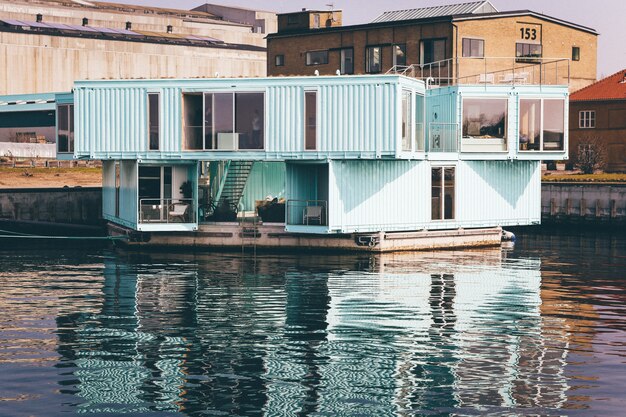
Sponsored article
In the realm of modern architecture, modular container buildings are emerging as a groundbreaking solution. These structures offer a blend of sustainability, affordability, and adaptability, making them a popular choice among architects and developers. From eco-friendly housing to innovative office spaces, container architecture is redefining how we think about building design. Dive into the myriad of ways these versatile containers are being utilized to create functional and aesthetically pleasing structures in today’s architectural landscape.
As the movement towards sustainable architecture gains momentum, modular container buildings stand out as a pivotal innovation that supports eco-friendly and energy-efficient construction practices. These versatile structures, often crafted from repurposed shipping containers, utilize eco-friendly materials and offer a second life to otherwise discarded resources. This approach significantly minimizes waste and reduces the demand for new raw materials, aligning seamlessly with the principles of sustainability. By opting for modular container buildings, architects and builders are providing environmentally conscious alternatives that cater to a growing market invested in reducing carbon footprints while maintaining aesthetic and functional appeal.
Additionally, modular container buildings inherently enhance energy efficiency. Their compact and sturdy design facilitates superior insulation, reducing the need for excessive heating or cooling, which in turn decreases energy consumption. Global Home Containers, a leader in this niche, exemplifies these benefits through their innovative designs and commitment to sustainability. Their modular containers, accessible here, highlight how sustainable construction can bridge functionality with environmental stewardship, promoting long-term ecological balance.
Modular container buildings stand out in the realm of modern architecture for their adaptable architecture, offering unparalleled versatility in design and functionality. These structures are not only cost-effective but can be easily customized to meet diverse spatial needs and personal preferences, making them an ideal choice for a wide range of applications. Their ability to be reconfigured allows for flexible layouts that can transform a single container into a dynamic and livable space. Whether for residential, commercial, or recreational use, their modular nature allows for the seamless expansion and contraction of spaces to suit different requirements.
The customization possibilities are vast, with owners and designers able to craft spaces that reflect specific needs and tastes. Examples include:
These custom designs not only maximize the utility of each square foot but also ensure that every space can be tailored to function precisely as envisioned.
Urban living solutions are continually evolving to address city challenges such as overcrowding and limited space. One innovative approach making waves in urban architecture is the use of modular container buildings. These structures offer remarkable space optimization, transforming compact containers into versatile living, office, and retail spaces. An appealing feature of modular container buildings is their ability to be stacked and configured in various ways, providing adaptive solutions for dense urban landscapes where traditional construction might be constrained by space and cost. As more cities grapple with skyrocketing populations, these buildings offer a sustainable and efficient method to maximize available real estate.
Examples of successful implementations are evident worldwide, showcasing how urban architecture can effectively incorporate modular container designs. In Amsterdam, the Keetwonen project, a student housing initiative, successfully utilized shipping containers to create affordable living spaces for thousands. Similarly, in London, the Container City project has transformed an unused dockyard into an elegant mix of office and residential spaces. These examples not only highlight significant space optimization achievements but also demonstrate a practical response to city challenges, underscoring the potential of modular container buildings in reshaping urban environments.